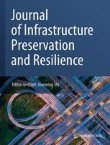Numerical investigation on the deformation of railway embankment under normal faulting
Active faults in the earthquake region are consistently regarded as a potential geological hazard to the construction and operation of railway engineering. However, the effects of normal faulting on railway em...

